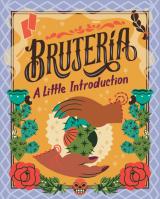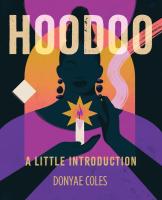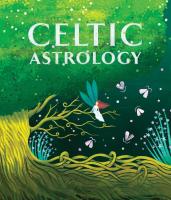Little Introductions to Diverse Magical Heritages

Dear mystics, our tiny but mighty mini books are a perfect way to broaden our horizons and dip our toes into new-to-us practices! Let’s take a closer look at three of these little introductions focusing on diverse magical heritages: brujería, Hoodoo, and Celtic astrology. Read on for an introduction to each tradition, plus a ritual or horoscope to help you start your journey on each path.
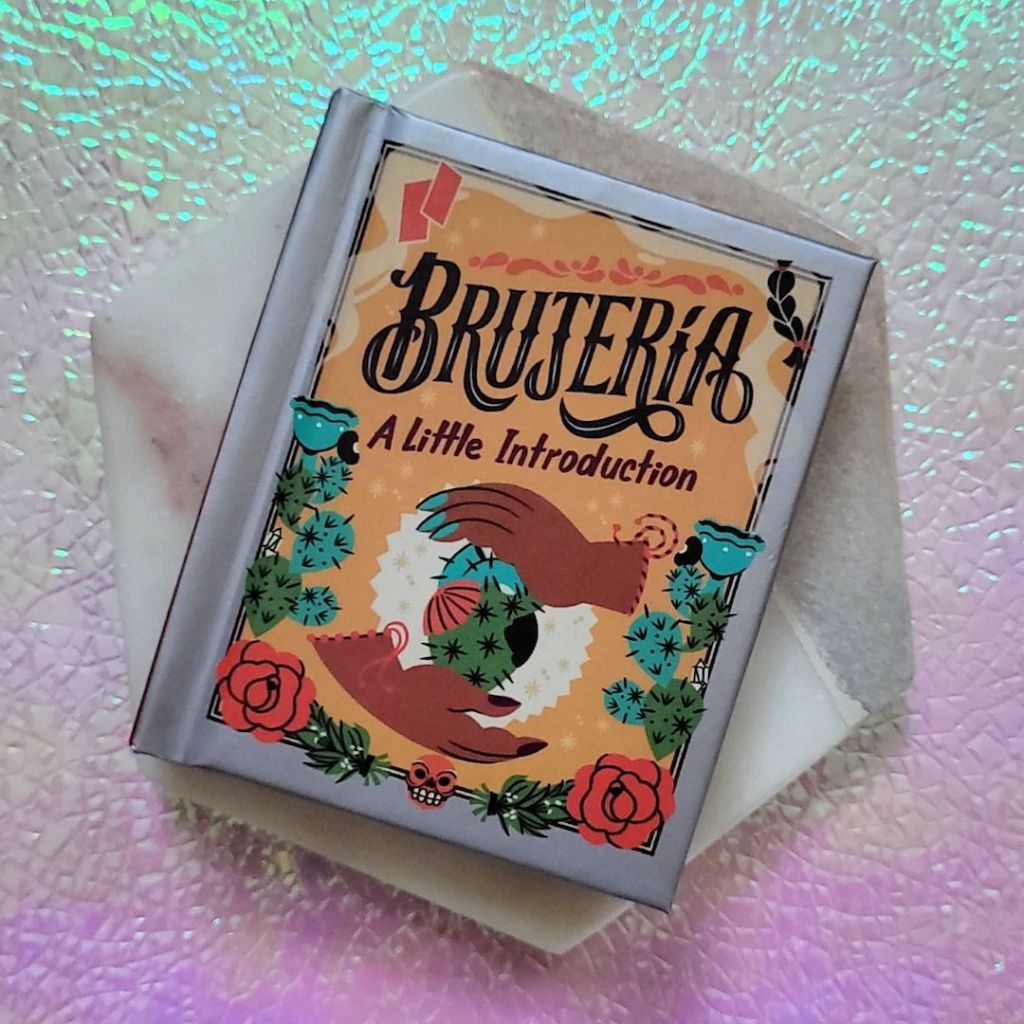
A Little Introduction to Brujería
Although brujería has a reputation for being scary or evil, the reality is brujería is a set of deeply spiritual and energetic practices that people, traditionally women, have exercised for centuries to help themselves and their communities. The things we typically associate with brujería, or “witchcraft,” are mostly different methods of connecting and working with the natural world. Brujas are also commonly associated with pagan, Indigenous, and African religious and/or cultural practices that have been disparaged by colonization, the Church, and Western society.
Brujas are healers, medicine women, and midwives. We often work in the light, the dark, and everything in between. Brujas have chosen to walk the path of their ancestors and have answered the call to exist fully in their magic.
The number one thing people associate with brujería is spell work, but it is often unknown how to execute spell work safely and effectively. If you are in the process of exploring your magic, there is an order of things that should be in place before you jump into spell work. Mainly this means learning the basics of spiritual hygiene, as well as cleansing, grounding, and protection work. Baby brujas have no business doing spell work or conjuring if they don’t know how to cleanse, ground, and protect themselves energetically. Murphy’s Law says things can and will go wrong. Things can get real, real fast as a novice. Caution is advised when interacting with the occult.
There is, however, safe manifestation work that baby brujas can do to connect with guides and ancestors, build confidence, and improve their skills. In this little introduction to brujería, we’ll look at some of the different elements used by brujas that you can also incorporate into your own life to be a little more connected to your spiritual practice.
NOTE: Bruja is a feminine term. We acknowledge male and gender nonbinary—the brujos and brujix— but for the purposes of this guide, we’ll be using “bruja” to describe magical practitioners.
White Liquid Limpia for Mental Clarity
Something that brujas do to feel more deeply and fully connected is create a solid spiritual hygiene ritual. But what is spiritual hygiene? Spiritual hygiene encompasses the various methods and modalities that are used across nearly every society to rebalance and/or remove energies absorbed by the physical body. Things like Himalayan salt rooms, bath houses, saunas, and mineral spas are all forms of energetic care for the spiritual body. Even things like going to the beach and getting in natural bodies of water or putting your feet in the earth can count as spiritual hygiene when done intentionally.
Having a spiritual hygiene routine will also allow you to feel the messages of your ancestors and guides more intensely. It will also allow you to access and understand the vibes you receive as you move about the world. For this the most common way of removing and rebalancing energy is through limpias (energy cleansings) and baños espirituales (spiritual baths). Generally, a limpia is to remove and a baño is to add on.
For an easy white liquid limpia for mental clarity, you’ll need:
- Kolonia 1800 (any scent)
- A basin or a large water jug full of water
- Cascarilla
- 3 or 4 white flowers (chrysanthemums or hydrangeas are great)
- Holy water (optional)
- Coconut water from 1 coconut (optional)
- Cocoa butter
- 1 cup of ice
- 1 white tea light candle
In a counterclockwise motion, add 2 or 3 squirts of Kolonia 1800 to the water jug or basin. Crumble cascarilla into the water as well as the petals of your flowers in a counterclockwise motion. You can add a few squirts of holy water and coconut water if you choose. Take a few chunks of cocoa butter and break them up in the liquid. As you add your ingredients, stir everything together with your hands and say aloud what the limpia is for:
“With the blessings and license of my benevolent ancestors and guides, I prepare this limpia to remove unwanted and unuseful energies.”
Repeat any other intentions you’d like to focus on. Add the ice and light the candle, floating it in the liquid until it goes out. Then pour the liquid over your head while standing in the shower, and once again repeat your intention. When you’re done, you can pat yourself dry and go about your day or go to bed.
For more about brujería, check out Mystical Lotería: A Spiritual Celebration of the Classic Latin Party Game!
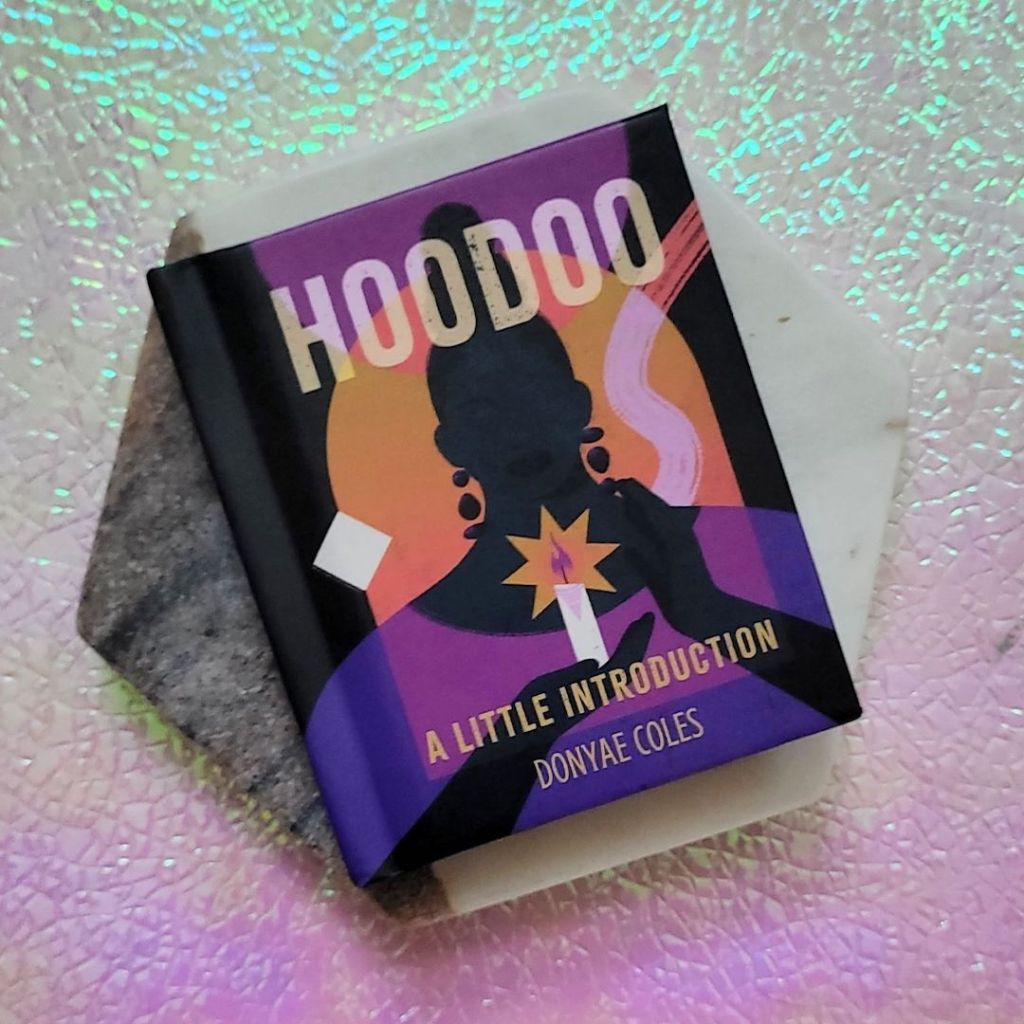
A Little Introduction to Hoodoo
Hoodoo goes by a variety of names. It is also known as conjure and rootwork, the latter for an obvious reason! The practice relies heavily on plants, herbs, and roots. Hoodoo is a form of sympathetic magic, which means it’s based around the concept of “like attracts like.” There is also a good deal of what is commonly thought of as “superstition” in Hoodoo. The practice itself is not just a performance of spells—also called work—but is instead a way of looking at and interacting with the world. Veneration of ancestors and respect for natural spirits are core aspects of the practice that reinforce our connections with all that we come into contact with.
Hoodoo is a rich cultural practice that comes from African American folk magic. It is based in principles of protection, healing, and community. Although Hoodoo is often inaccurately depicted as being about work that causes harm, such as curses, that is in opposition to what the practice is for. While it is true that various aggressive works can be done, those are not the majority of spells and rituals performed by rootworkers and followers.
Hoodoo was created by enslaved Africans to help heal and protect them. It incorporates a number of African beliefs, as well as Indigenous North American and European ones. The practice of Hoodoo began on plantations in the antebellum South and grew and evolved as the needs of Black people changed over the decades. As formerly enslaved Black people began to migrate to other parts of the United States, Hoodoo formed distinct branches based around the needs of the people as well as the availability of the natural materials in those regions. It continues to be practiced to this day, both publicly and privately.
Within the work of Hoodoo, there are all types of rituals for anything from gaining money to protecting one’s home, finding love, and increasing your luck. In fact, for pretty much any problem in daily life, there is a Hoodoo practice meant to help solve it. There is no issue too small or too large to be addressed with Hoodoo.
Hoodoo was created as a practical solution for the problems that the people who practiced it were facing. The need for money, protection of the home from aggression, and keeping the family together and healthy are just a few of the very real, very common needs of Black people during the time of Hoodoo’s creation. This is also why the tools and supplies needed for the practice are so simple and common—so they can be sourced by people who have very few means.
Hoodoo is not just peaceful work. There are also rituals, powders, and work meant to harm or overpower others. Many spiritual people have decried these works, but this is the wrong way of thinking about them. The context in which Hoodoo came to be calls for the existence of such practices, and it is not wrong to utilize them. Love, revenge, and banishment all have their place and can be used responsibly to protect people.
Home Protection and Cleansing
Your home should be a safe space where you can relax and engage with your loved ones and yourself. But what if it isn’t? Many people feel uncomfortable in their own space. This small ritual will help to cleanse as well as protect your home. This can be done for a full house or a single room.
You only need two things: salt and a broom.
To start, open your windows to allow air to flow in. Thank the spirits for bringing you clean air to help you rid your space of negativity.
Then, from the back of the home or room, begin to sweep the floor, thinking of banishing those negative feelings. Although it’s helpful, you do not need to actually sweep the floor for cleaning—you can go through the motions of sweeping. Go room to room, always starting in the back and moving to the door. If multiple stories need to be done, start at the top and work your way to the bottom.
Sweep all this energy out of your front door. If you are only renting a room, then sweep the energy out of your bedroom door. If it’s an apartment, then sweep into the apartment hallway. You want the energy out of your space. When you are finished, sprinkle a little salt in all four corners of the rooms and shut the windows. Move through your home in reverse with the salt, ending where you started.
This is a very simple but intensely useful work that helps ground you inside of your home as you claim it as your space. When you are at your altar next, offer thanks to spirits that helped you cleanse your home by lighting a bit of incense.
For more about Hoodoo and ancestral guidance, check out Saturday Magic: A Hoodoo Story and Black Tarot: An Ancestral Awakening Deck and Guidebook!
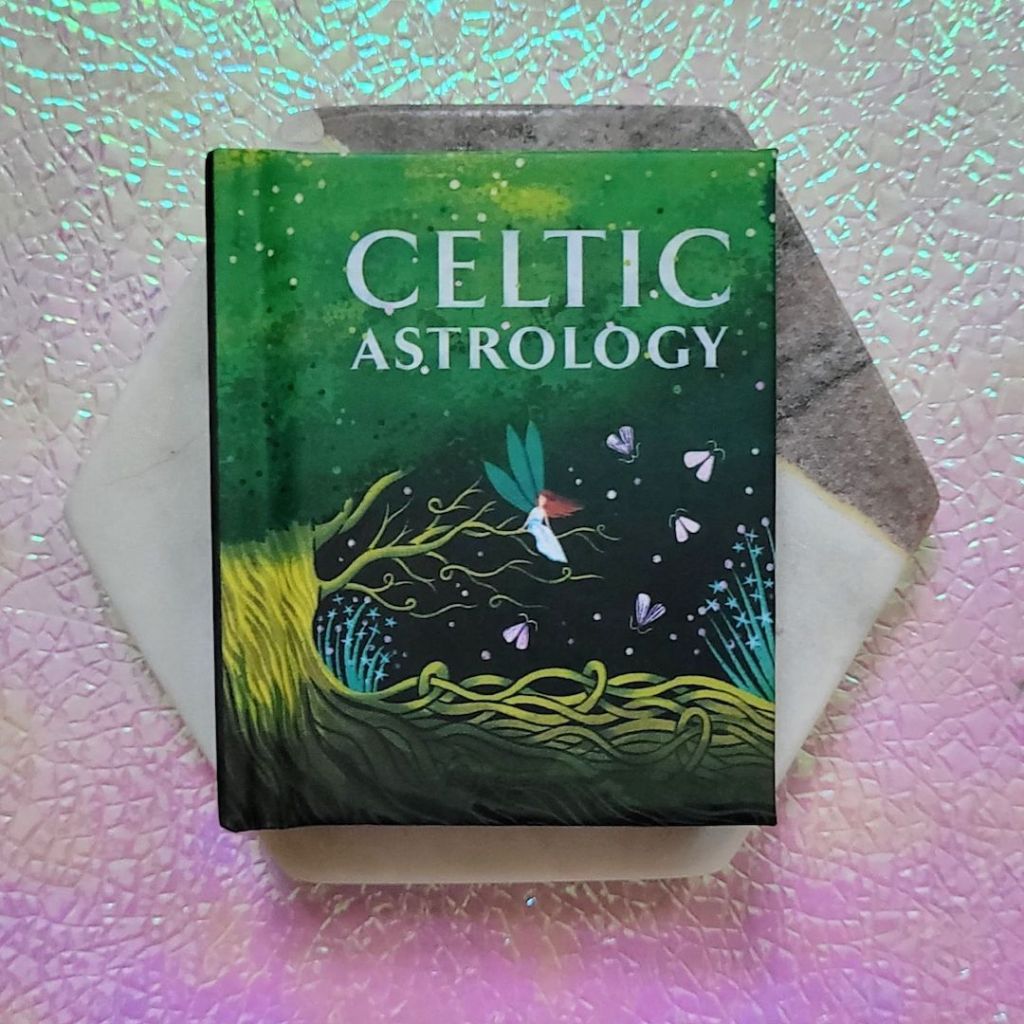
A Little Introduction to Celtic Astrology
Celtic Astrology (also known as the Celtic Zodiac or Celtic Tree Wisdom) is full of symbolic layers that go back in time. Before the Romans and Christianity overtook parts of Europe (including Ireland, Scotland, Wales, Cornwall, Brittany, and the Isle of Man), the Celtic culture dominated. The lush land, full of green trees, acted as their bounty. The Celts respected and believed in nature as though it lived and breathed and contained a spirit beyond their own. It held wisdom.
A specific group of Celts called the druids have, over time, been stereotyped as “tree worshippers,” ancestors to this Celtic Tree Wisdom. The word “druid,” in fact, translates to mean “the wisdom of an oak tree.” They were philosophers, scientists, priests, and poets who trained from a young age and for as long as twenty years. They tapped into energies, both natural and supernatural, that existed in the trees. The general name for the spirits of the trees was “dryad.” Other characteristics (as you will see in this book) identified the spirits of the trees, which the druids believed came from the Sun (aka the Supreme Being). Not only were trees seen as sacred and alive, but also as keepers of Infinite Knowledge and Wisdom, and as emblems of Life, Death, and Renewal.
At the beginning of time, the druids believed the center of being human originated from trees. And with each tree came a unique mystical quality that the druids documented in their own way. Their druid traditions were mostly passed down orally. However, one written form of communication (symbolic in nature) has come to be associated with them: the Tree Ogham (also known as the Celtic Tree Alphabet). In the ancient, rune-like system of communication, each mark or letter linked to a tree name. For example, B is the first letter that is associated with Beith in Gaelic and translates to be the English tree name Birch.
Throughout time, these symbols have come to be a tool for divination, but no proof exists that the druids utilized the ogham in that way. Instead, it was a secret communication device for the druids, something to be memorized during their training. Obviously if it was considered “secret” we cannot assume everything is known about the symbols’ association with the druids. But without the druids’ ancestry, we could never begin to unlock the wisdom of the trees, inspiring the Celtic Tree Calendar.
Astrology Profile: Birch
December 24 to January 20
Ogham Letter: Beith
Key Traits: Persistent, Diligent, Loyal
Color: White
Gemstone: Crystal
Out with the old, in with the new. The spirit of the birch is all about fresh beginnings. Picture yourself at the edge of a forest with many paths before you. Where do they lead? To love? A new career? An overdue resolution? With any path there are goals and choices to be made that can affect not only you, but others in your life as well. Do not surrender into the fear or anxiety of start-overs, though. Embrace fierce determination, ambition, and strength. On the surface, the birch may appear weak and brittle, with its fragile bark. However, it is hard at the core. Let this image guide you, that in times of apparent growth you search your core to discover what keeps you steadfast. And, in that, life will eventually be renewed.
Ask Yourself: What has potential in me, in my life, to change?
Tree Tidbits:
- Legend has it that the wood of the birch tree wards off evil spirits.
- The birch can be used to treat rheumatism and arthritis.
- Because of its “new beginning” meaning, the traditional Yule log, burned around Christmastime, is often birch.
- Although the birch may appear weak, it is one of the trees that can live in the Arctic tundra.
For more about Celtic astrology and runes, check out Forest Magic: Rituals and Spells for Green Witchcraft and our Runes: Unlock the Secrets of the Stones mini kit!
Dive Deeper
Learn more about Brujería, Hoodoo, and Celtic astrology in our pocket-sized mini books!





